Air Force Red Army against the Luftwaffe. Stormtroopers
After talking about fighters and bombers, we turn to the third component of the air triad of the two armies. Moreover, there are also many interesting moments.
Beginning.
We can say that the founders of the assault aviation Germans became precisely. The concept of dive bombing, which was actively studied in the USA in the 30s of the last century, played a role. And since the dive bomber very successfully fit into the practice of “blitzkrieg”, work in this direction in Germany began immediately after Hitler came to power.
As a result of the technical task developed already in 1933, the Henschel-1935 aircraft was flown into 123. In its LTH, the aircraft was not very different from the fighters of the time, but it was much inferior to the bombers in terms of bomb load. However, the Hs-123 came to Spain, where it was tested in a light diving bomber.
Tests have shown that the Ju-87 is an order of magnitude better and more efficient, and the Hs-123 was reclassified to attack aircraft, becoming the first Luftwaffe aircraft in this class. In this role, HS-123 took part in the Second World War.
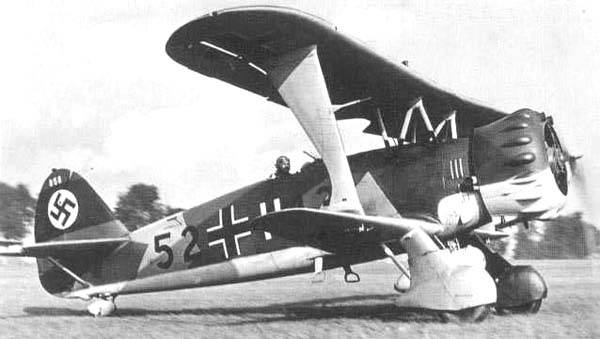
Technical specifications
Crew: 1
Length: 8,33 m
Wingspan: 10,5 m
Normal takeoff weight: 2217 kg
Powerplant: 1 × PD BMW 132Dc × 870 l. with.
Flight characteristics
Maximum speed: 341 km / h (at a height of 1200 m)
Practical range: 860 km
Service ceiling: 9000 m
Rate of climb: m / s 15
weaponry
Gun-gun: 2х7,9 mm machine gun MG-17
Suspension Points: 4
Combat load: 4х50 kg of bomb; or containers with 2-kg fragmentation bombs SD2 (each of the two containers could hold 92 bombs); or 2х20 mm guns MG-FF on underwing holders
The plane went through battles in France, Belgium, Poland. It was very good in terms of superiority of the Luftwaffe in the initial period of World War II. At one time, there was even a question about the continuation of serial production, but limited to a remake of the modification Hs-123В with a closed cabin, enhanced booking and a more powerful engine.
A total of 265 aircraft were launched, which fought on the Eastern Front right up to the 1944 year. The meager number of aircraft does not allow us to speak about any outstanding results. But - the plane directly supporting the frontline troops nominally was at the Luftwaffe.
At the beginning of the Great Patriotic War in the Red Army Air Force, the role of attack aircraft was also assigned not to the most modern aircraft. Such was the general concept, the role of direct support aircraft was assigned to obsolete and often inefficient machines.
It is not surprising that aircraft that could not in any way fulfill the role of fighter jets fell into the ground attack aircraft of the Red Army Air Force. We are talking about I-15bis and I-153.
I-15bis, a modification of the Polikarpov fighter I-15, created simultaneously with the Henschel-123 in 1933, began its service in 1937, and by the beginning of the war was really outdated.
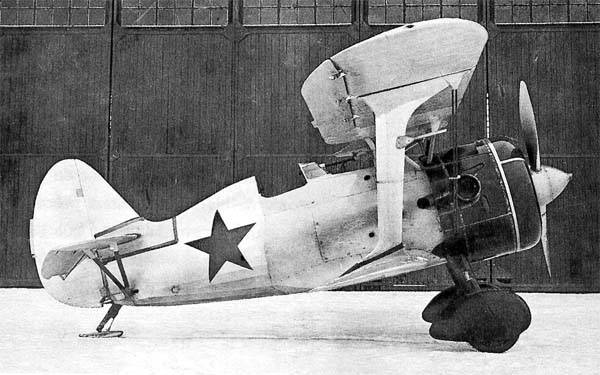
Technical specifications
Crew: 1 people
Length: 6,275 m
Normal takeoff weight: 1700 kg
Maximum takeoff weight: 1870 kg
Powerplant: 1 × M-25В × 700 l. with.
Flight characteristics
Maximum speed:
at the ground: 327 km / h
at height: 379 km / h on 3500 m
Practical range: 520 km (technical)
Service ceiling: 9800 m
Climbing time: 5000 m for 6,8 min
weaponry
Cannon: 4 × 7,62 mm machine gun PV-1
Combat load: 150 kg on 4's suspension points (2 × AO-25 and 2 × FAB-50)
Obviously, the I-15bis was inferior to the "Henschel", and pretty much. However, 2408 aircraft were produced, which were actively used in the first months of the war.
AND-153.
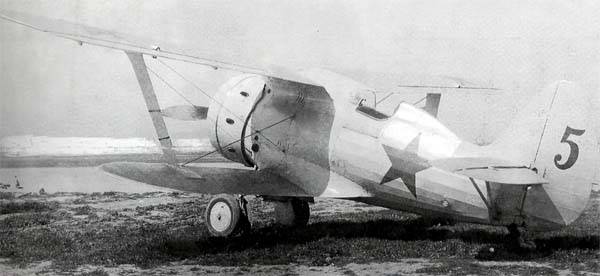
As the name suggests, the third modification of the I-15. The development has gone quite further than the I-15bis, as it received a retractable landing gear and armor.
I-153 can definitely be called the first Soviet attack aircraft, because already in 1940, when it became clear that the I-15 aircraft was no longer to be upgraded, the conversion of already built I-153 into attack aircraft began.
Alteration was expressed in the installation of guides for launching rockets.
Technical specifications
Crew: 1
Length: 6,275 m
Normal takeoff weight: 1 765 kg
Maximum takeoff weight: 1 859 kg
Powerplant: 1 × M-62 × 1000 hp
Flight characteristics
Maximum speed:
at the ground: 366 km / h
on the altitude: 426 km / h
Practical range: 740 km
Ceiling: 11 000 m
Rate of climb: m / s 15
weaponry
Shooting gun: 4 × 7,62 mm ShKAS machine gun
On the suspension: up to 8 × PC-82, up to 200 kg bombs.
A total of 3437 I-153 aircraft were produced.
In general, the concept of acquiring assault aircraft from the opponents was about the same.
It should be noted that until the 1943 year, when problems in the air of the Red Army air forces were eliminated, a similar approach was practiced in the Soviet troops in the future. In particular, in the initial period of the war, when everything that could carry a bomb load and damage the enemy was used as attack aircraft.
An example is the long-suffering LaGG-3. When it finally became clear that the aircraft could not be used as a fighter, as it was much inferior in all TTX to German aircraft, the LaGG-3 was used as a ground attack aircraft.
A whole "anti-tank" series of vehicles (34-I series) was built, with an amount of about 100 units. Instead of the 20-mm SHVAK gun, the 37-mm NS-37 was installed. The aircraft of this series fought in the 1941-42 years near Moscow and Stalingrad.
In general, both in the USSR and in Germany, they came to the conclusion that a new class aircraft was needed, which could not only provide support to the troops, but also successfully fight the enemy’s armored vehicles.
Luftwaffe
The Germans realized this back in 1937, when they announced a contest to replace the Hs-123. In April 1937, the technical department of RLM (Ministry of Aviation of the Reich) developed the concept of an armored attack aircraft for action against armored vehicles and field fortifications. This class of cars was named Schlachtflugzeug, which can be translated as a strike aircraft or a battlefield aircraft.
The task involved the creation of a single-seater with minimal geometrical dimensions (to reduce the area of the affected surface), equipped with two engines and armed with two MG-FF 20-mm cannons and two machine guns. The cockpit and engines were required to cover anti-bullet armor.
In the finals of the competition were the model "Focke-Wulf" and "Henschel", preference was given to the latter, as the most appropriate task.
129 cannot be called a masterpiece of engineering thought, although many today are trying to do it.
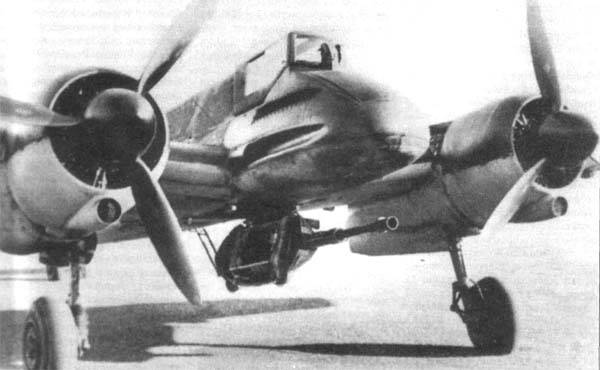
Specifications:
Modification Hs-129V-2
Wingspan: 14,2 m
Length: 9,75 m
Normal take-off mass: 4 310 kg
Engine type: 2 x "Gnome-Rhone" 14M 4/5 x 700 hp
Maximum speed: 320 km / h
Practical range: 560 km
Maximum rate of climb: 350 m / min
Service ceiling: 7500 m
Armament:
Standard: two MG-7,9 17-mm machine guns, two MG-20 / 151 20-mm guns
Suspended: one З0-mm cannon MK-101 or four 7,9-mm machine gun МG-17 or 4 50 bombs kg or 96 х 2кг fragmentation bombs.
The pilots rated the aircraft sharply negative. First of all, the extremely narrow and narrow armored cabin caused discontent. To reduce the area and weight of armor plates, its dimensions were reduced to the maximum. As a result, the width of the cabin at the shoulder of the pilot was only 60 centimeters.
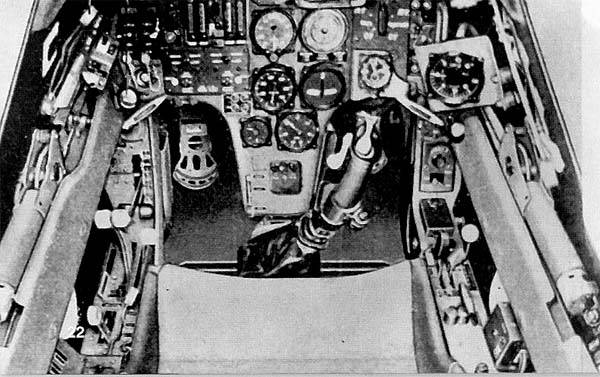
The small dimensions of the cabin did not allow the control handle to be installed in its normal length. Instead, she had to put a short joystick, which immediately received the nickname "penis".
In the armored cabin did not fit the dashboard with a full set of instruments. Therefore, the devices controlling the operation of the engines have found a place for themselves outside, right on the engine nacelles (perhaps the only such case in world practice). Collimator sight "Revie" in the cockpit also did not fit. He was enclosed in a special armored casing and hoisted on the fuselage in front of the frontal bulletproof glass.
In addition to the crampedness, a useless sideview and excessive loads on the controls, which made piloting difficult and very tiring for the pilot, were noted.
But as a reward for the inconvenience, the pilot receives increased safety. I had to agree with these arguments, all the more so because there was still no choice: in terms of comfort, the Focke-Wulf product didn’t go far from Henschel, and it flew much worse.
However, the flight data of the Hs-129 were also far from ideal. The most unpleasant surprise was that Henschel could not swoop normally. Even at relatively small angles. If the angle of descent exceeded 30 degrees, the efforts on the output became excessive, exceeding the physical abilities of the person.
As already mentioned, the aircraft was made twin-engined in order to increase survivability, so that if one engine fails, it could return to another. But during the tests, it turned out that the Henschel on one motor cannot fly. It is a fact.
If in general, then the concept of the attack aircraft fell apart. And yet, the Hs-129 was launched into mass production. In the winter of 1940, the Wehrmacht and the Luftwaffe were preparing for major tank battles, and in these conditions, an anti-tank plane, even so miserable, came to the court.
Yes, and to establish any serious mass production firm "Henschel" could not. The 870 units that left the workshops, of course, won theirs up to the 1945 year, the peak of production fell on the 1943 year, when 411 machines were produced, but by that time the Red Army air forces had recovered from the losses, and even if well armed and armed, a slow, slow-moving and with a very bad view attack aircraft was always a welcome guest in the sights of Soviet pilots.
Even the Henschel upgrades didn’t help to reinforce the armament, when the HK-129B-2 / R-3 was equipped with the 37-mm BK-3,7 and Hs-129B-2 / R-4-gun, which was equipped with the Pak-75-mm gun 40. Flight characteristics were becoming sadder.
And the last official sortie Hs-129 made 11 on May 1945, as part of the Romanian Air Force. Romanians bombed parts of the Vlasov army in the vicinity of Prague, which did not want to surrender to the Soviet troops and fought their way westward into the American zone of occupation.
Junkers Ju-87D-3 and D-5
Yes, "Stuck", too, eventually got into the attack aircraft, and also the residual. Strengthening of air defense and fighter cover, the gradual loss of air supremacy by German fighter aircraft on almost all fronts, the success of the combat use of the Il-2 attack aircraft led to an attempt to transform Stuck from a dive bombard.
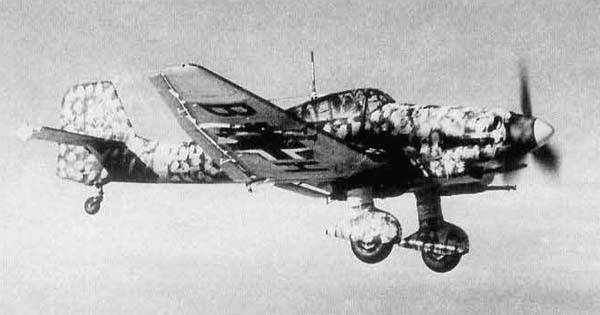
So in the year 1942 appeared Ju-87D-3, attack aircraft-bomber, still retained the air brakes for a dive, but with enhanced armor. The pilot had a canopy of a flashlight of two-inch armored glass, 8-mm sheets of chromium-nickel steel were installed over the skin of the cabin sides, and even moving flaps were armored on some machines. There were also additional 5-mm armor plate under the oil radiator and armor plates, covering the front and the side of the gas tank in the center section.
The attackers had rather weak offensive (2 machine guns in the 7,92 caliber mm MG 17 in the D-3, and 2 guns in the MG151 / 20 in the D-5) armament. Acting as stormtroopers, Stuka most often used wooden containers on 92 fragmentation 2-kg SC2 aerial bombs, which were ineffective in protected targets. In addition, they used bombs and larger caliber: 500 and 250 kg.
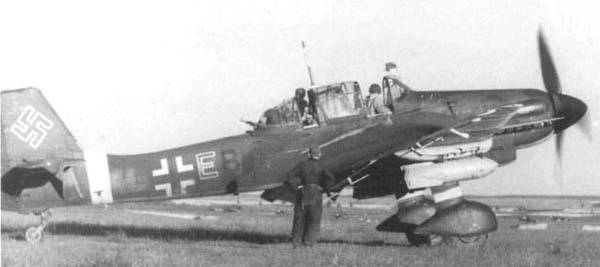
Model Ju-87D-3 was the most popular of all the "pieces", they built 1559. Based on the D-3 built several experimental modifications. The most important was the "anti-tank" version of the D-3 with 37-mm cannons, the future Gustav.
Junkers Ju-87G
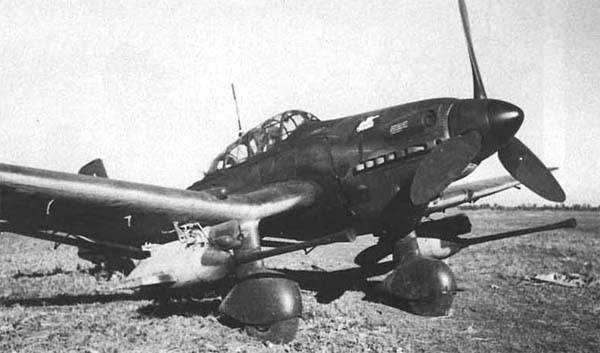
The main difference between Gustav and Dora was the armament, namely the installation of two Flak 37 Xnumx cannons under the wings. Together with the shells on the 18 shells, they were fastened under the wing immediately behind the landing gear.
Wing machine guns and bomb weapons were absent. Airplane booking has been weakened. Unlike the standard Ju87D-3, on the anti-tank Gustav there was no booking of the shooter, centroplane gas tanks and water radiator. The thickness of the rear armor of the pilot was increased to 20 mm. The rest of the car reservation remained unchanged. The attack aircraft received the designation Ju87G-1.
Ju87G-1 proved to be slow and very cumbersome, which, combined with reduced armor and weak defensive armament, made the car an ideal target for fighters. The maximum speed of the aircraft decreased by 30-40 km / h.
Ju87G-1 has not dived already, the attack of targets was made from planning at angles no more than 10-12 degrees. But the input to the planning was difficult. Sighting turned out to be difficult, due to the poor stability of the aircraft, due to the aerodynamic influence of the cannons, large spaced masses (the weight of one gun with a gun, excluding the weight of the magazine and projectiles, 473 kg) and the increased flight weight.
The Gustavs at Kursk debuted, and, according to reports, they achieved some success. True, the reports of the Soviet technical services did not confirm these reports. However, there was no evidence of success from the German side, the "gentlemen" were believed to be the word.
However, the calculation of losses and the correctness of the data is a completely different matter.
The facts say that from the 208 “Gustav” and 1559 “Dor”, by the autumn of the 1944, only one Rudel III / SG2 group remained in the Luftwaffe, still flying during the day on Ju-87D and G, along with two 10 anti-tank squadrons. (Pz) / SG2 and 10. (Pz) / SG77.
Junkers Ju-88P
An attempt to create a heavy anti-tank attack aircraft based on the very successful aircraft Ju-88A-4.
Ju-88Р-1 appeared in June 1943 of the year. Air brakes were removed from A-4, bomber weapons were removed. In the large ventral fairing installed 75-mm gun Pak-40. Gun ammunition was 16 shells, reloading was carried out by electropneumatics. The gondola with a cannon could be shot down with squibs and dropped.
The crew consisted of three people. Rifle armament included the exchange gun MG-81 and two MG-81Z in the lower and upper rear defensive installations. Jumo211J-2 engines were armored and cantilever tanks removed. With a normal takeoff weight of 11 000 kg, the maximum speed of the Ju-88Р-1 did not exceed 390 km / h.
From the planned series in 30 Ju-88-1, by September 1943 all 18 machines were manufactured.
Ju-88Р-4, all the same P-1, but with the 50-mm cannon VK 5.
The P-4 series, released at the beginning of 1944, was larger, the 32 instance. In February, an 1944 (9 (Eis) / KG1) squad was formed at the Orsh airfield on the basis of the 6 / KG3 squad and several crews from 14 / KG3, however, there are no data on the successful actions of the squadron.
Focke-Wulf 190F
The idea of reworking this outstanding aircraft dates back to the beginning of 1943 of the year. Since reviews of the Fw-190 fighters were favorable, and by the end of 1942, the Wehrmacht was in urgent need of a modern attack aircraft, RLM decided to speed up the beginning of the mass production of a special assault modification, designated as Fw-190F.
The first mass series of Fw 190F attack aircraft was created on the basis of the Fw 190A-5 / U3 fighter.
It should be noted that there were few constructive differences between the attack aircraft and the Fw-190 fighter. All F-variants, starting with the F-1 and ending with the F-16, were designed to perform tasks for the direct support of the troops and therefore had enhanced armor protection.
Fw-190F-1 was the first shock option "Focke-Wulf." The aircraft could carry an 501-kg bomb on the external ventral bomb racks of the ETC 500. In addition, bomber adapters could be attached to the ETS 501. For example, it was possible to install the adapter "Grosse Bombenelektrik", which allowed hanging up to eight 50-kg bombs SC 50.
Fw 190F-1 small-gun armament consisted of two MG 17 machine guns (900 rounds) and two MG 151 / 20 MG cannons with 250 rounds of ammunition.
The design of the Fw-190F-2 attack aircraft was based on the Fw-190A-5 / U10 modification. The Fw-190A-5 / U17 fighter became the benchmark for the new version of the Fw-190F-3 attack aircraft, which began production in May, 1943.
All F-3 cars were equipped, as well as the basic fighter modification, with the BMW 801D-2 HP hp engine.
The main serial sub-option Fw-190F-3 / R1 possessed four (2 + 2) ETS 50 wing holders and one ventral ETS 501 for hanging bombs or 300-liter discharged fuel tank. Thanks to the use of streamlined bomb racks, the F-3 speed was 23 km / h higher than the speed of the previous attack aircraft.
Specifications:
Modification Fw-190F-3
Wingspan: 10,5 m
Length: 8,95 m
Normal take-off mass: 4400 kg
Engine type: 1 x VMW-801d-2 x 1700 hp
Maximum speed:
at the ground: 547 km / h
at height: 638 km / h on 4500 m
Practical range: 745 km
Maximum rate of climb: 642 m / min
Ceiling: 10 000 m
Armament: two MG-151 / 20 cannons in the wing root, two MG-7,9 17-mm machine guns on the fuselage,
ventral holder ЕТС-250 per one 250-kg bomb.
on the F-3 / R1, four ETC-50 underwing holders or two underwing 30 mm MK-103 guns.
In total, the X-NUMX F-627 / 1 series aircraft were produced.
However, the “Focke-Wulf” storm-troopers can be considered conditionally. Rather, they were troop support aircraft, with an emphasis on bomb armament, since the 20-mm MG151 / 20 gun did not provide adequate armor penetration and could pose a real threat exclusively to unarmored or lightly-armored vehicles.
Nevertheless, the FW-190 as a strike aircraft could perform tasks with which the Junkers and Hensheli could no longer cope with the 1943 year, since they exceeded them both in speed and in armament.
Air Force Red Army
In the Soviet Union they actually went along a parallel path in the development of attack aircraft. And from the year 1937, when the Spanish experience showed the need for a “cutting edge” aircraft that could successfully hit armored targets, work was constantly being done.
It was suggested many options. Kocherigin's attack aircraft (BS and LBSH), Polikarpova (VIT-1 and VIT-2), Sukhoi (later became a Su-4 bomber), A. A. Dubrovin (0-AM-35), A. I. Mikoyan (PBSH- 1), Ilyushin (TsKB-55 and TsKB-57).
The closest to the ideal turned out to be Ilyushin BSH-2, which embodied the development of both projects of the Central Design Bureau.
IL-2
This plane has already been written so much that it is not worth repeating. The most massive aircraft not only of World War II, but also in stories aviation. 36 183 instance of all modifications.
Specifications:
Wingspan: 14,6 m
Length: 11,60 m
Normal take-off mass: 5 310 kg
Engine type: 1 x AM-38 x 1575 hp
Maximum speed: 450 km / h
Practical range: 638 km
Rate of climb: 625 m / min
Ceiling: 7 800 m
Crew: 1 people
Armament: two 23-mm cannons WN-23 or two 20-mm ShVAK cannons, two 7,62-mm ShKAS machine guns, 8 PC-132 (or PC-82)
Bomb load - 400 kg.
Originally planned as a double, the IL-2 went into a single-seater plane. Until now, different versions of the “who's to blame” cycle, the Air Force leadership or Ilushin himself, who “fitted” the aircraft’s performance characteristics to the technical task, have been voiced by removing the arrow and adding an additional fuel tank. In favor of the second version says the very TK, in which the shooter was.
By the end of 1942, the aircraft again became a two-seater, the ShKAS machine gun was added to the armament, and after 1943, the 12,7-mm UBT.
Since January, the more powerful engines AM-1943F (HP 2) were installed on the IL-38, the number of RSs was reduced to 1720-x.
In 1944, the IL-2 NS-37 modification went into the series, two guns of 37-mm 11П-37 caliber OKB-16 with 50 ammunition shells per gun, without missiles, with a bomb load of 100 kV, were installed. 200 kg in reloading. Machine gun weapons remained the same.
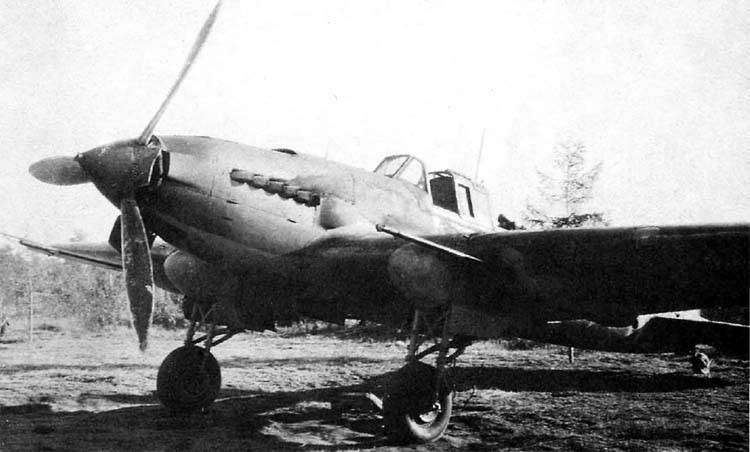
The maximum speed of the aircraft dropped to 390 km / h, but under the conditions of Soviet air superiority, this was not significant.
Was the Il-2 a masterpiece airplane? Of course it was. And here the matter is not even in manufacturability (although in it too). In versatility. Sufficiently powerful small arms made it possible to hit both unprotected and lightly armored targets. RS for psychological warfare (will not fall - which often happened - it will scare so), bombs. Yes, the 23-mm gun was not very strong for working on tanks (and the plane is not the best weapon for this), but the Germans suffered losses even among medium and heavy tanks not from IL-2 guns, but from cumulative PTABs.
Actually, you just have to regret the losers and not go into details.
Yes, the losses that the stormtroopers carried were enormous. But it’s not the plane and the pilots who are to blame, but the absence of tactics of application and fighter cover for the first time. After all, since 1943, the main losses were from air defense, and in this case the Germans had full order.
Nevertheless, if we compare the damage that 36 000 "Ilov" caused with the most critical counting and the success of the "Henschel" in the maximum configuration, it becomes clear which aircraft was more efficient. Not "Henschel."
IL-10
Further development of Ilyushin attack aircraft. The main difference from the IL-2 was that, taking into account the recommendations, the cockpit of the air gunner was fully turned on in the armored compartment (armored case). Increased the thickness of the armor of the engine hood from the bottom and from the sides to mm 8 instead of mm 4 on IL-2.
Specifications:
Crew: 2 person
Length: 11,12 m
Wingspan: 13,40 m
Maximum takeoff weight: 6537 kg
Engine: 1 × AM-42 (V-12 liquid cooling), rated power - 1770 l. s., take-off power - 2000 l. with.
Maximum speed:
on the ground - 507 km / h
at the height of 2300 m - 551 km / h
Combat radius: 800 km
Service ceiling: 7250 m
Rate of climb: m / s 10,42
Armament:
Machine-gun:
Two 23-mm guns VYa-23 or НС-23КМ, two 7,62-mm ShKAS machine guns.
Do the arrow: X-NUMX-mm gun UB-20 or 20-mm UBT machine gun.
Combat load: up to 600 kg of various weapons:
In the bomb bay:
144 × PTAB-2,5-1,5 (230 kg) or
136 × AO-2,5SCh or
182 × AO-2,5-2 or
56 × AO-8М4 or
40 × AO-10 type bombs or
2 × FAB-100
Under the wing:
2 × FAB-250 (500 kg) (in reloading version with 2 × FAB-100 in the bomb bay)
8 × RS-82 or PC-132 missiles
A total of 6 566 IL-10 was released, but before 1 in May 1945, the Red Army Air Force received 745 machines.
Yak-XNUMHUI (strike fighter)
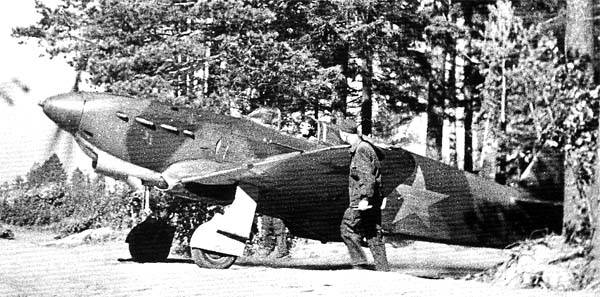
Different from the serial Yak-1 presence of external suspension for the 8 PC-82. To this end, the wing was strengthened at the suspension points. The fighter well proved itself the use of the RS.
On all Yak-1, starting with the 80 series, two bomb racks (BI-42 locks with tongs) were installed to suspend 25, 50 and 100 caliber bombs.
Later, the suspensions were removed, according to a GKO resolution of 10 in May of 1942. The main reason that influenced this decision was a large loss of speed (up to 30 km / h) if there was a PO-82 on the plane with suspended PCs.
However, later (from September 23 1943), when the Yak-1 fighters pressed from the first rows of air fighters Yak-9 and La-5 aircraft, bomb racks began to be installed again. This expanded the scope of the machine, exhausted all the possibilities of its improvement.
A total of 1148 Yak-1 was built with the possibility of RS or bombs suspension.
LAGG-3 (11-I series)
Modification LaGG-3, which appeared not from the good life. The fighter catastrophically lost to LTH German aircraft, so it was decided to use the existing aircraft for conversion into light attack aircraft for striking to directly support the attacking troops.
In addition to the six PC-82 rocket launchers, the 11-series aircraft received bomb holders D3-40. Thanks to these LaGG-3 bomb holders, they could use light bombs up to 50 kilograms (high-explosive FAB-50, fragmentation AO-25М and FAB-50М or chemical HUB-25 and AOX-15). Airplanes also received the chemical containers VAP-6М (Vlivnaya Aviation Instrument) with 38 liters of phosphorus gas and an ASBR-2 sprayer capable of throwing all the gas in 3-4 seconds. Incendiary containers ZAP-6 (incendiary aviation device) were also used to destroy enemy personnel.
The combat capabilities of the 11 series aircraft were further increased at the start of 1942, after replacing the PO-82 launchers with missile launchers PC-132.
Shock-assault versions of the LaGG-3 were used on the Kalininsky front at the end of 1941 and at the beginning of 1942. The 129 Aviation Regiment, equipped with LaGG-3 11 series fighters, for the successful operations at the beginning of 1942, received the rank of Guards.
If we evaluate in general, the Luftwaffe completely lost the war of attack aircraft at the forefront. Both German and Soviet attack aircraft in 1943 could not have a significant impact on the heavily armored enemy equipment using cannon armament. But the Soviet attack aircraft except for guns had a wider range of weapons. And, of course, the mass release played a major role.
An attack aircraft (read, Il-2), capable of attacking a target with missiles and bombs, and then “polished” with cannons and machine guns, turned out to be a more significant weapon for the same columns on the march than a diving bomber.
The question is, again, the tactics of application. It is difficult to compare IL-2 and Hs-129, who was better. And there is no need. Enough memoirs of surviving German soldiers and officers who, with rare exceptions, did not write about their impressions of the IL-2. But ours, mentioning "Hensheli" should be very look.
“Stuck”, on the other hand, turned out to be clearly incapable of exerting influence due to its complete obsolescence. The Focke-Wulfs could have become universal strike aircraft if they had not been sacrificed to a fighter program.
However, this is the reasoning in favor of the losers.
Sources:
Haruk A.I. Fighters of the Second World War.
Shunkov V.N. Luftwaffe Aviation.
Shavrov V. B. The history of aircraft designs in the USSR.
Simakov B.L. Aircraft Country of the Soviets.
http://www.airwar.ru.
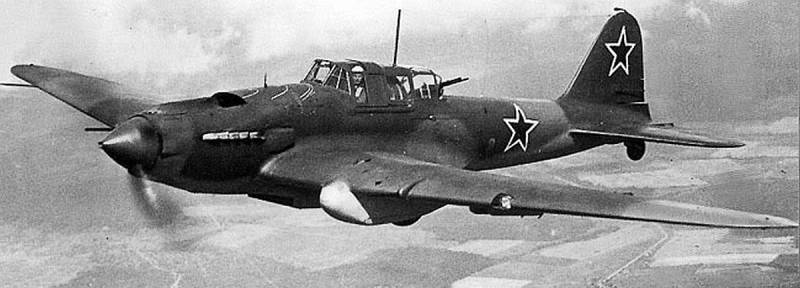
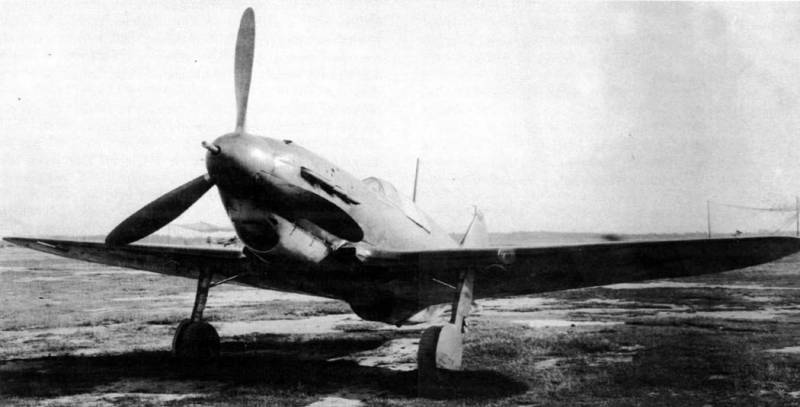
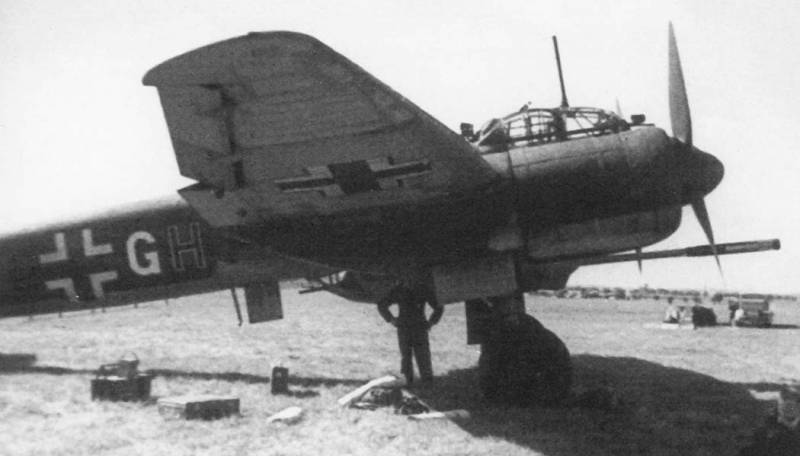
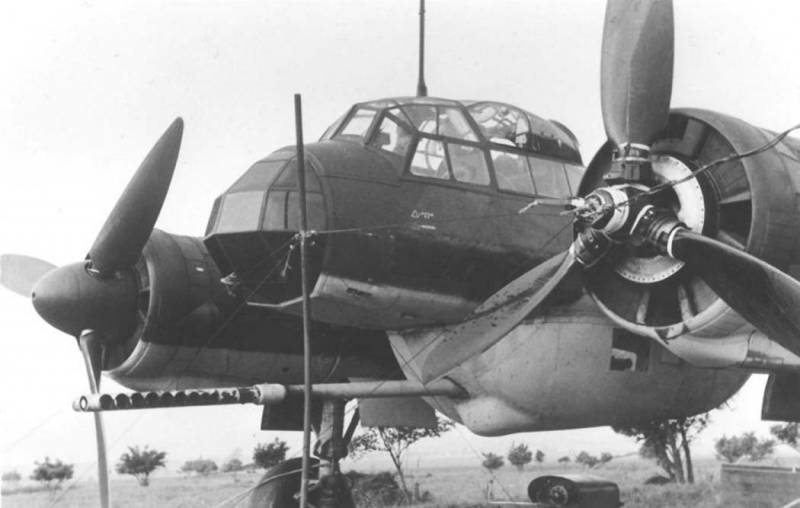
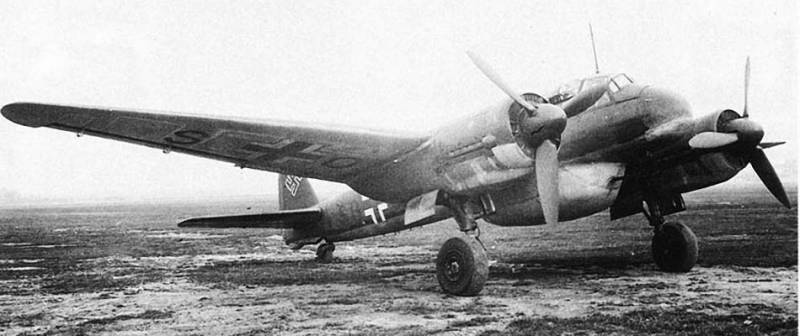
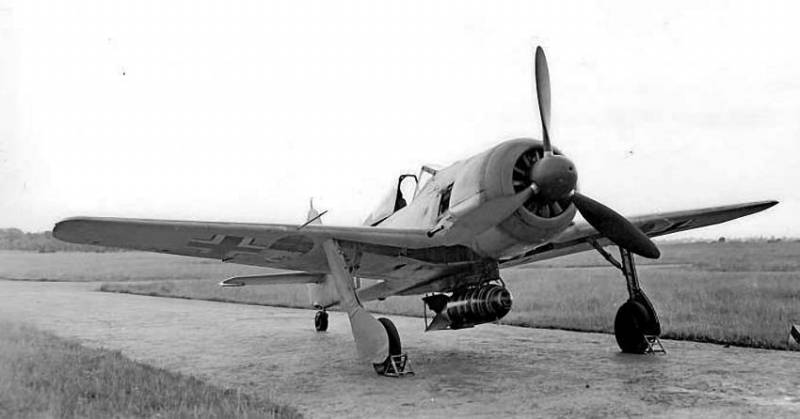
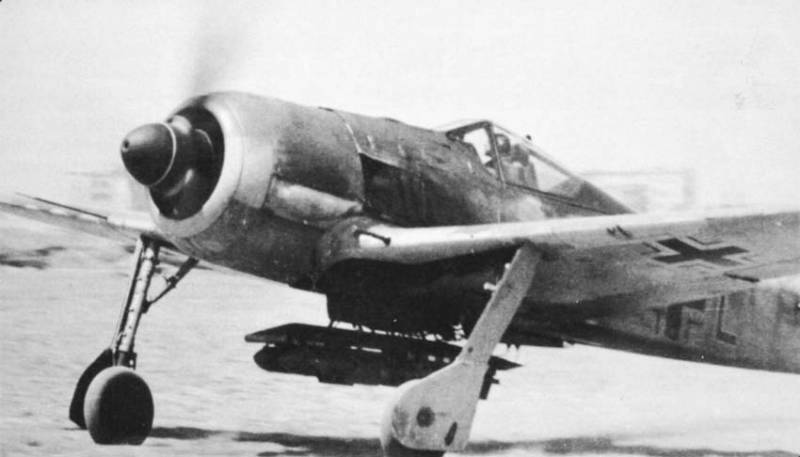
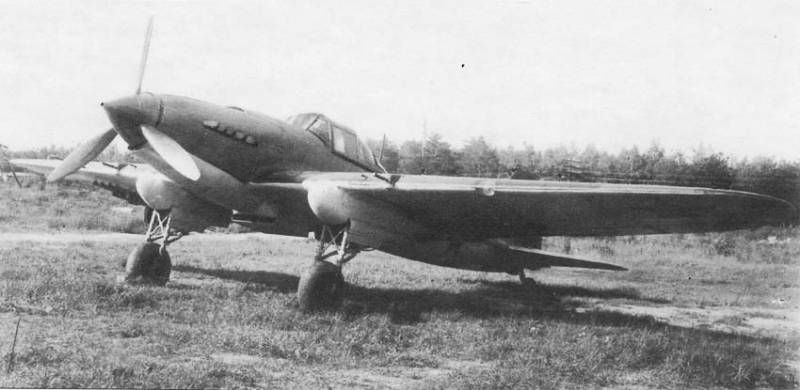
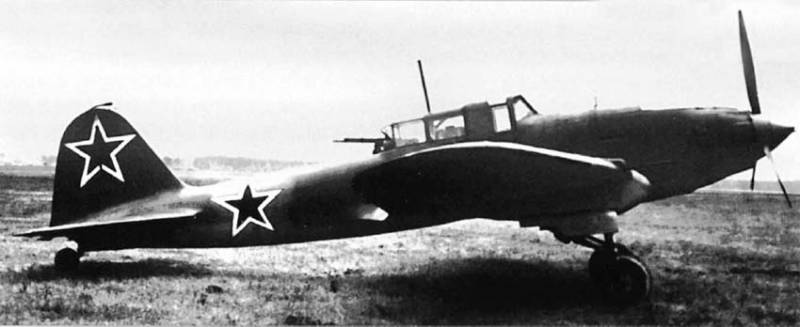
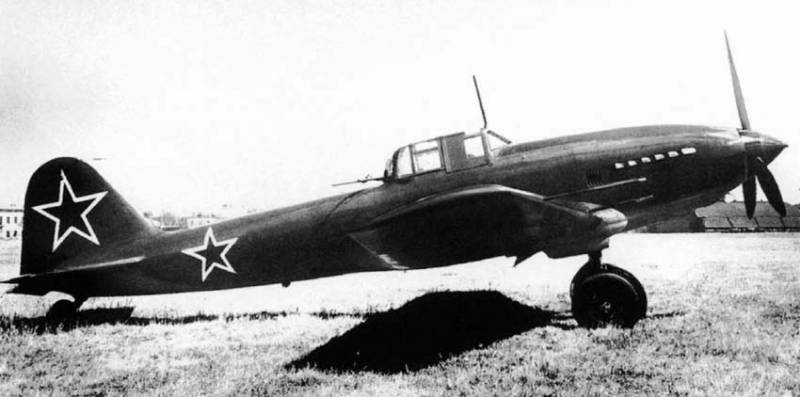
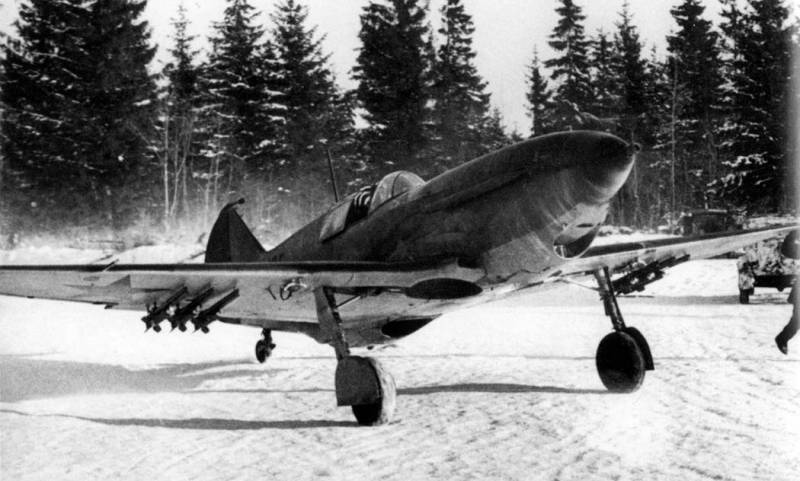
Information